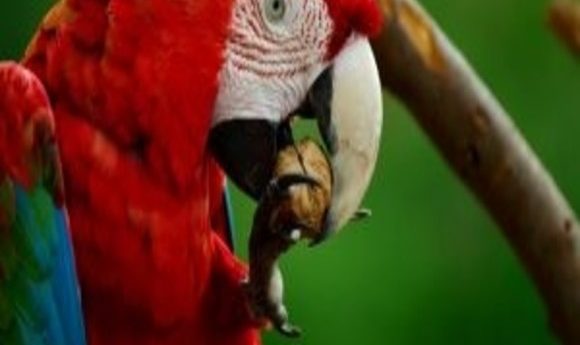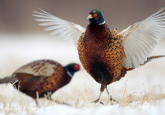What lets parrots get down to monkey business?

New research explains why parrots are less bird-brained.

Researchers from the University of Alberta (AB, Canada) have identified a neural circuit that could be the key to understanding bird intelligence, and that reveals convergent evolution between bird and primate brains.
The research could lead to new insights into human intelligence.
Primates and humans have a larger telencephalon and cerebellum than is seen in other mammals, accompanied by a larger pontine nuclei structure. “This structure transfers information between the two largest areas of the brain, the cortex and cerebellum, which allows for higher-order processing and more sophisticated behavior,” explained Cristian Gutierrez-Ibanez (University of Alberta).
Certain birds, such as parrots, show a high level of cognitive ability – they are able to make tools, recognize themselves in the mirror and learn vocally, among other things. However, while we know parrots have a telencephalon to rival primates, the understanding of the rest of their brain relay has remained unclear, until now.
“In recent years, it has been increasingly recognized that complex cognitive abilities (or any behavior) cannot be assigned to a single brain structure [like the telencephalon]; rather they arise from distributed neural systems,” the authors noted.
The new research shows that birds have normal-sized pontine nuclei, but also have a structure in another part of the brain called the medial spiriform nucleus (SpM). This works in a similar way, routing information between the cortex and the cerebellum, and is enlarged in parrots.
The team examined 98 samples from a wide range of birds including chickens, owls and parrots. Comparing the size of the SpM, they noted that it was two- to five-times larger in parrots.
“Independently, parrots have evolved an enlarged area that connects the cortex and the cerebellum, similar to primates,” noted Gutierrez-Ibanez. “This is another fascinating example of convergence between parrots and primates. It starts with sophisticated behaviors, like tool use and self-awareness, and can also be seen in the brain. The more we look at the brains, the more similarities we see.”
Future research will see the team seek to elucidate the workings of the SpM. “This could present an excellent way to study how the similar, pontine-based, process occurs in humans,” concluded Gutierrez-Ibanez.





